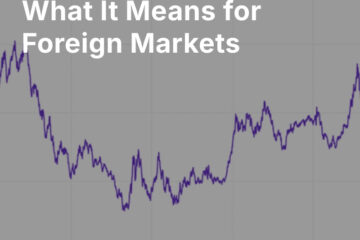Market Summary
U.S. and World Outlook: Pivotal Influence Is the Value of the U.S. Dollar
The U.S. dollar continues to be strong and this continues to disincentivize U.S. investors putting money into commodities, non-U.S. stock and bond markets. Simultaneously, the strong U.S. dollar incentivizes foreign investors to put money in the U.S. markets so that they will benefit not just from higher U.S. stock prices, but from a dollar which rises in value versus their home currency. Both of these trends are fortunate for U.S. stock owners, and have contributed to the continuing slow and steady grind-up in U.S. stock values.
We remain bullish on the U.S. economy and the U.S. stock market, which is driven ahead by very strong U.S. corporate profits. 80% of S&P 500 companies exceeded analysts’ profit estimates, and the average increase in corporate profits for the second quarter of 2018 was about 24%. As mentioned previously, U.S. GDP and employment are very strong. Corrections in stock market occur periodically, and will be opportunities to add to positions in great companies.
Potential Trouble Spots?
The U.S. economy and stock market is doing fine — but what about potential problems in the global environment that could cause a bear market?
We see no major global events on the horizon that would cause an end to the current bull market over the next 12 months.
We see no major war, major banking crisis, or global currency collapse that would frighten world markets and create a panic out of stocks, including U.S. stocks. Often-mentioned potential trouble spots include (1) Italian banks; (2) overly tight policies in China leading to a collapse of Chinese economic growth; (3) collateral damage from trade conflicts; or (4) a sharp growth slowdown in some significant country or region.
On the first point, Italian and other weak European banks will stagger along with help from the European Central Bank and the governments of other European Union member nations.
On the second point, China has already begun to reverse its tight money policies, although it continues to warn about shadow-banking problems, increasing leverage among consumers, and some speculative activities among businesses. China’s economy is fairly stable and well-balanced currently.
On the third point, currency depreciation among our trading partners in Europe, Mexico, Canada, China and elsewhere is occurring as it has occurred in trade disputes for hundreds of years. Currency fluctuations are within the normal range and not currently alarming. Thus far, the tariff disputes with Europe and Mexico appear to be being negotiated toward a successful conclusion.
Trade disputes with Canada are on hold, and Canada is not yet moving toward resolution. We believe that Canada will be resolved once Mexican disputes are resolved, which could be later in 2018 after the new congress is sworn in on September 1. President López Obrador takes office on December 1.
China’s tariffs on the U.S. are not enough to seriously disrupt the U.S. economy, although U.S. tariffs on China will definitely bite. China exports five times as much to the U.S. as they import.
Finally, we see growth and no major problems from inflation or economic deceleration in the great majority of countries. The few very poorly run countries such as Venezuela, Zimbabwe, and others remain too insignificant to cause a problem for the world as a whole, although they cause great suffering among their citizens. As always, there are a few countries which are moving toward less stability; recent examples are Turkey and Iran, but these will not affect global economic growth to any great degree.
Some economic forecasters are now predicting up to three years of future growth without a recession for the world. As always, we closely monitor the outlook, and while we prefer to see a long run of positive economic growth, we will be vigilant and alert readers should serious clouds appear on the economic horizon.
Our favored groups include U.S. growth companies and technological disruptors, U.S. small and medium-sized companies operating within the U.S., technology growth disruptors like the FAANG stocks (Facebook [NASDAQ: FB], Apple [NASDAQ: AAPL], Amazon [NASDAQ: AMZN], Netflix [NASDAQ: NFLX], and Alphabet [NASDAQ: GOOG]), Spotify [NYSE: SPOT], some major biotech companies, and selected companies in the following groups that are not over-valued: hospital management companies, electronic payments, cybersecurity, travel technology, oil production, retail, and the consumer sector.
Gold
We are nearing the season when gold often bottoms, and inflation is heating up in a modest way in the U.S. and abroad. In spite of a continuing drain of gold demand into cryptocurrencies, we think gold could rally later in August or in September for a few months.
Cryptocurrencies
Intercontinental Exchange [NYSE: ICE], which owns the New York Stock Exchange among other global bourses, recently announced the launch of a cryptocurrency platform, Bakkt, which is planned to function as an exchange and custodial solution, and offer physical delivery for Bitcoin futures contracts. (We know, we know — the irony of “physical delivery” of a virtual commodity!) We believe this is a very significant development — again, indicating that crypto’s progress into the financial mainstream is advancing rapidly.
Please note that principals of Guild Investment Management, Inc. (“Guild”) and/or Guild’s clients may at any time own any of the stocks mentioned in this article, and may sell them at any time. Currently, Guild’s principals and clients own AAPL, AMZN, FB, GOOG, and SPOT. In addition, for investment advisory clients of Guild, please check with Guild prior to taking positions in any of the companies mentioned in this article, since Guild may not believe that particular stock is right for the client, either because Guild has already taken a position in that stock for the client or for other reasons.
Thanks for listening; we welcome your calls and questions.



